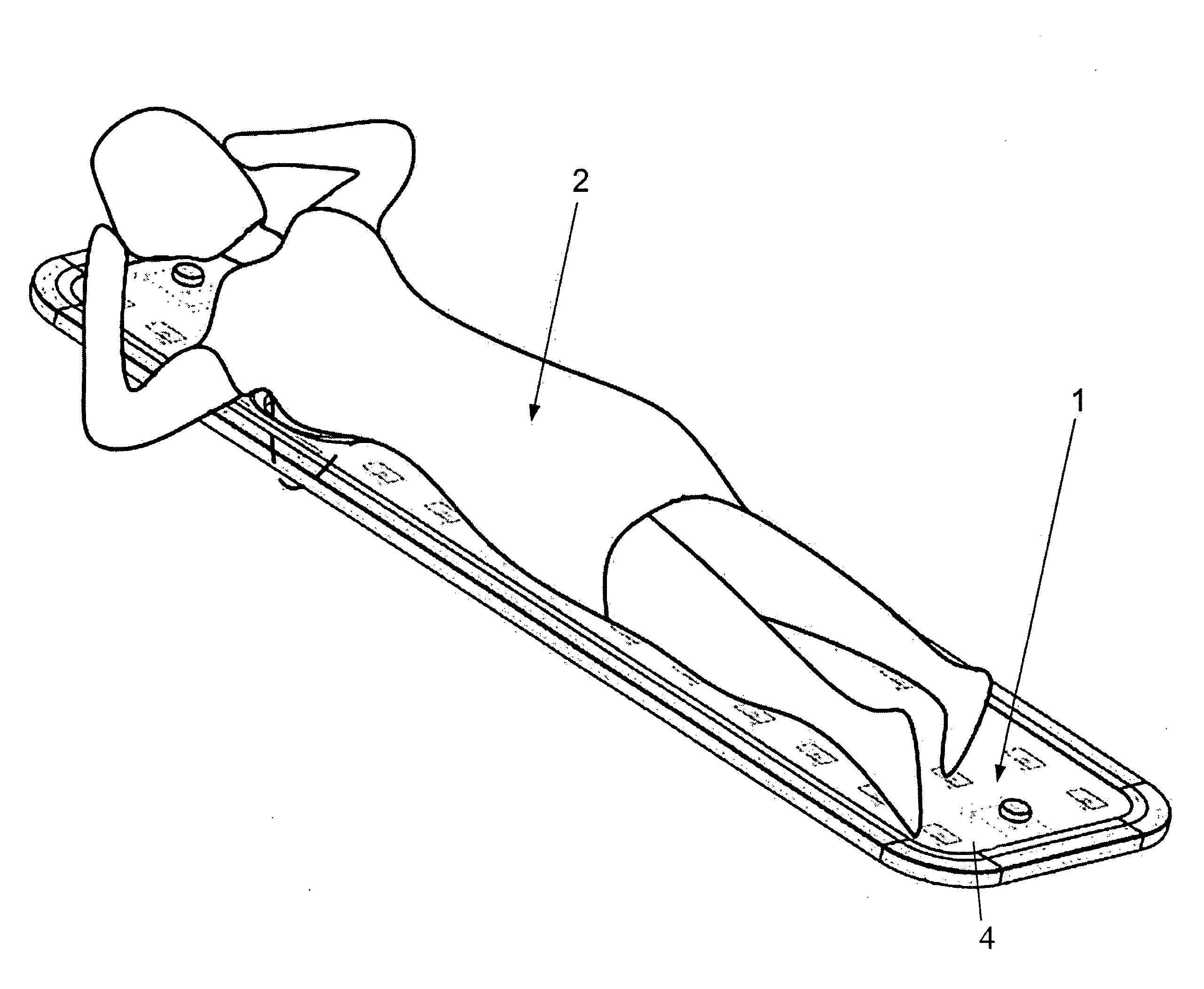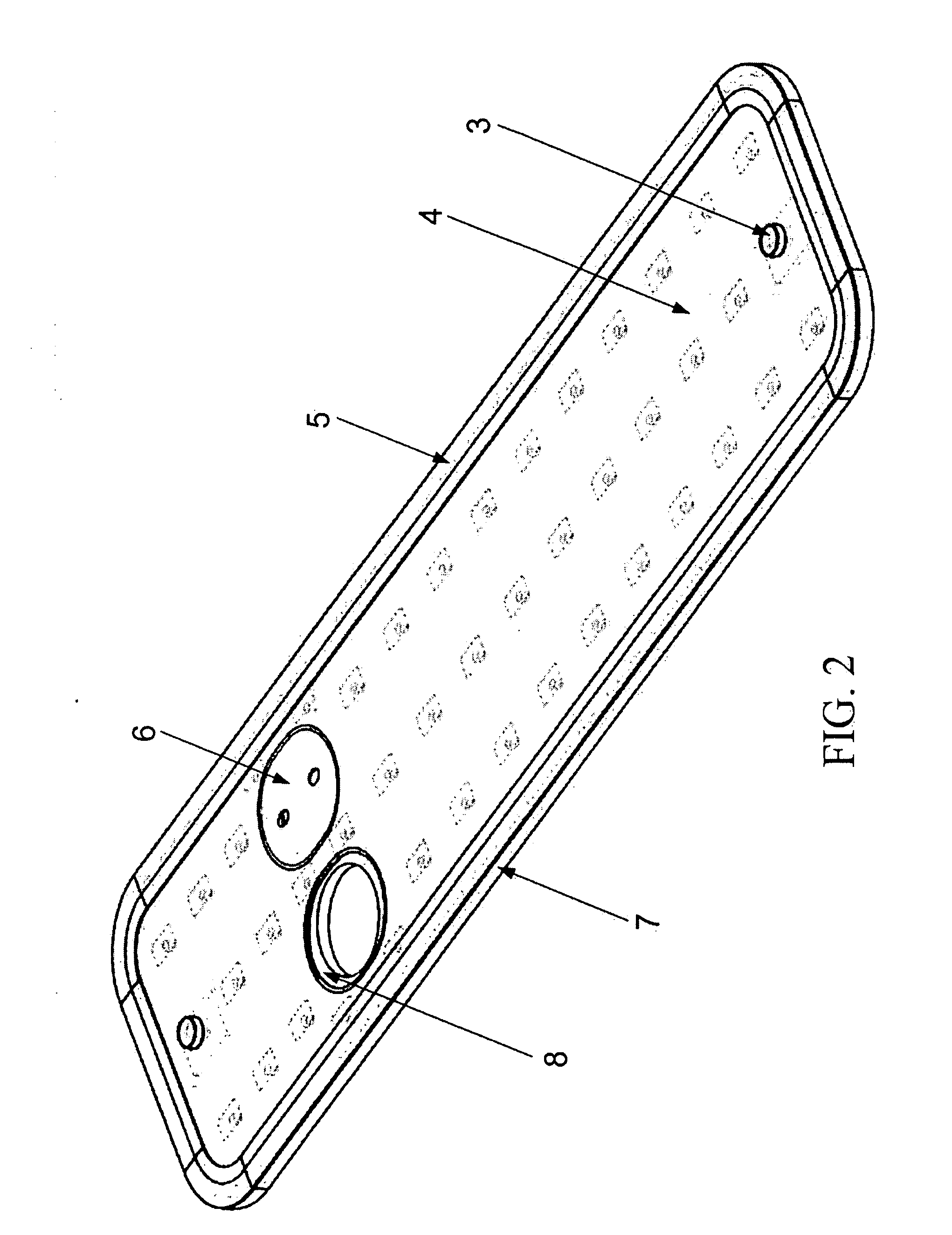Method and device for positioning patients with breast cancer in prone position for imaging and radiotherapy
a breast cancer and prone position technology, applied in the field of radiotherapy equipment, can solve the problems of patient loss of the ability to move controllable distances for accurate positioning of her breast, inferior prone position, and inability to accurately position the patient's breast, so as to facilitate the easy sliding motion and facilitate the effect of easy and efficient movemen
- Summary
- Abstract
- Description
- Claims
- Application Information
AI Technical Summary
Benefits of technology
Problems solved by technology
Method used
Image
Examples
Embodiment Construction
The present disclosure is a method and device for accurate positioning of patients in the prone position for breast imaging and treatment. Using the disclosed new device, one can adjust the position of a patient in the prone position easily and accurately.
Referring to FIG. 1, the patient 2 is positioned on a couch 1 comprising a top layer 4 and a bottom layer 8 (here obscured). The patient's targeted breast is pendent through an opening of the couch 1. Note that a thin mattress or pad may be put between the patient and the top of the couch for the patient's comfort.
A schematic design of the double-layer couch is illustrated in FIG. 2, including the top layer 4 and the bottom layer 8. Different materials can be used for the top and bottom layers 4, 8. For MRI imaging, the materials used for both layers should be non-ferromagnetic so that the couch will not distort the magnetic field in the imaging space. For the purpose of illustration, and as one example of the embodiment, plastic m...
PUM
 Login to View More
Login to View More Abstract
Description
Claims
Application Information
 Login to View More
Login to View More - R&D
- Intellectual Property
- Life Sciences
- Materials
- Tech Scout
- Unparalleled Data Quality
- Higher Quality Content
- 60% Fewer Hallucinations
Browse by: Latest US Patents, China's latest patents, Technical Efficacy Thesaurus, Application Domain, Technology Topic, Popular Technical Reports.
© 2025 PatSnap. All rights reserved.Legal|Privacy policy|Modern Slavery Act Transparency Statement|Sitemap|About US| Contact US: help@patsnap.com



